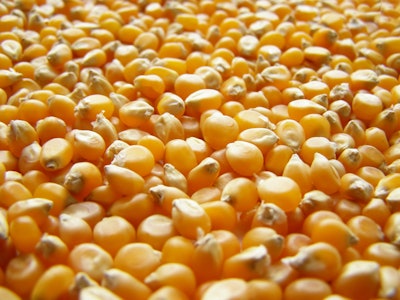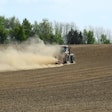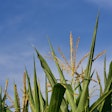
A surplus of corn from last year's unexpectedly large U.S. crop and slowing demand could steer farmers away from planting corn this year — and may already be affecting acreage in Brazil, according to Bob Maltsbarger, a senior research economist with the Food and Agricultural Policy Research Institute at the University of Missouri.
The U.S. Department of Agriculture (USDA) cut projected consumption of corn for food, feed and industrial use in its February World Agricultural Supply and Demand Estimates, adding 10 million bushels to the estimated surplus stock from the 2023 harvest. Global demand for soybeans is down as well, according to USDA, and prices for both commodities fell slightly after the report's February 8 release.
Weakening prices, higher production costs and the weather have all contributed to a shift in acreage in Brazil, Maltsbarger said. USDA slashed expected corn production by 3 million metric tons this month but added 2 million tons to Brazil's expected soybean crop, based primarily on shifts in acreage.
This year's El Nino means Brazil anticipated experiencing some dry weather, Maltsbarger said, but the drought continued longer than expected and began cutting into the planting season. Much of the country's soybean crop was planted later than usual, and some of it had to be reseeded, he said. That in turn means second-crop corn, which accounts for the majority of Brazil's corn production, will also be delayed as a result.
While the delay is likely to cut into yields, Maltsbarger said corn prices do not give Brazilian farmers much incentive to strive for a larger corn crop this year. That will likely cut into acreage as well as yields, as reported by USDA.
But Maltsbarger noted that the USDA continues to predict a larger Brazilian corn crop than Brazil's own agricultural agency, Conab. That could suggest steeper cuts to U.S.-based projections in the months to come, he said.
And though the U.S. planting season has yet to begin, U.S. farmers could be swayed a similar direction if price trends hold, Maltsbarger said. Weak corn prices, high production prices and elevated prices for soybeans were expected to fuel a larger soybean crop at the expense of U.S. corn acreage in 2023, but U.S. farmers surprised market analysts by planting much more corn than expected. Maltsbarger said he believed that fertilizer prices, which began to decline in late 2022, prompted the last-minute shift in acreage in 2023. And it is possible, he said, that farmers will plant more corn this spring in spite of weak prices if fertilizer and other production costs — which remain elevated — decline in the months to come.

















